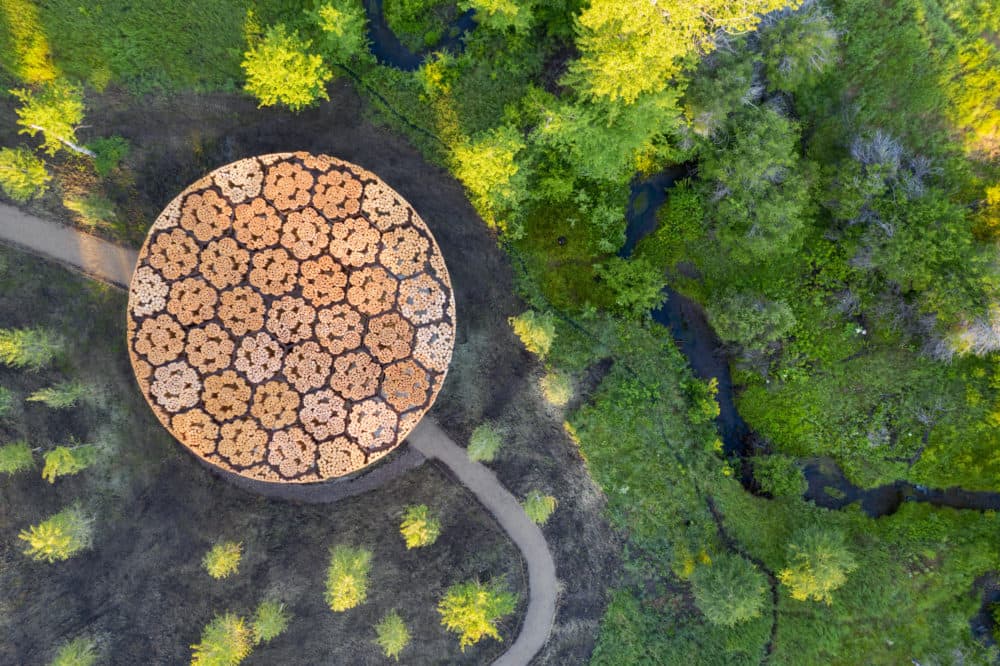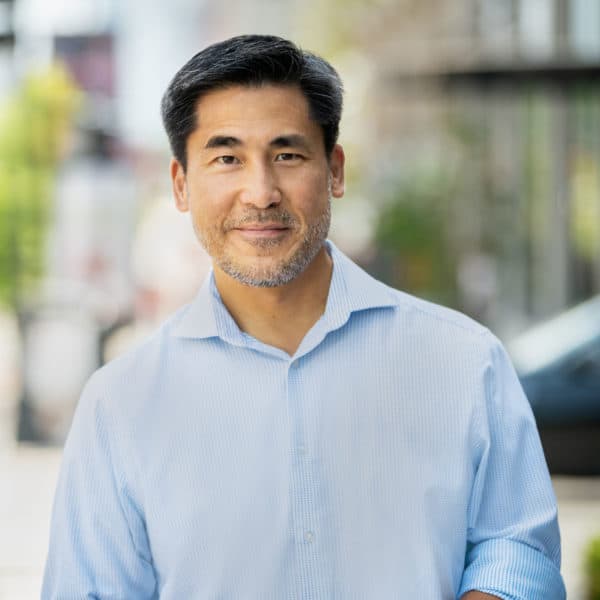Advertisement
Pritzker winner Diébédo Francis Kéré wants to 'create beauty for the most underserved populations'

Diébédo Francis Kéré is still processing his historic win of the Pritzker Prize.
He’s the first Black person to win architecture's highest honor in its 43-year history. Kéré says when he got the news, he was brought to tears.
“I lost my voice. I couldn’t speak,” he says.
Kéré was born in a small village in Burkina Faso. No clean water, no electricity, no schools. At the age of 7, he left his community to become the first from there to attend school.
“Sitting in a classroom with more than 100 other kids, it was so hot and it was dark inside the classrooms,” he recalls.
Kéré eventually went to Germany to study woodwork and then architecture. It was then that he made it his mission to use architecture to give back.
Tom Pritzker, who chairs the prize committee, described Kéré as “equally architect and servant, improving the lives and experiences of countless citizens in a region of the world that is at times forgotten”.
And while Kéré’s designs can be found across Europe and the U.S, most of them exist in different African countries. They include schools and clinics, mostly in his native Burkina Faso.

Interview Highlights
On creating brighter, cooler classrooms without additional energy sources in his village
“I created a roof truss to elevate the metal shape from the enclosing classroom boxes. Sometimes, I put pots that I made in the village to create openings for light and ventilation. And also using the most available materials, such as clay, to create classrooms that are so comfortable and inspiring for my people. I didn't just want to create classrooms. I wanted to create beauty for the most underserved group of populations.”

On the importance of designing schools and medical clinics
“I was born in the village where all of this is missing, and that is why I started to build schools and to build health care centers. But also because education is the basement for everything. My father sent me to school. He wanted me to learn to read and write. And today I am an architect because of that. So education give you a solid basement, and then you can then grow later professionally.”
On his approach to architecture
“For me, I'm coming from a community where the survival of the entire community depends on how you hold together, how you contribute. And so when I had the chance to study architecture, I wanted to make things better for even those that have nothing. Also, comfort is a right for those that cannot afford. My approach is to use architecture to serve, and I'm able to keep pushing architecture at that level. And with the Pritzker, you don't know how many millions of young people see hope — see that you can be in a little tiny village somewhere in the world and the Pritzker jury will find you. They found me. We should not just wait for someone else to come and do that for us. If you can start, just start. You should dream big and push your dream forward. Just do it!”
On the significance of being the first Black winner of the Pritzker Prize in an overwhelmingly white industry
“I feel a sense of big responsibility. But I see a lot of hope. And the profession being seen as white is potentially the reason that, for example, in the U.S., you have to really find someone that has enough resources to let you build and people will discover your talent, which is often difficult. That’s why most that have resources are connected to the majority in the U.S., that are usually white, because economically it is an exclusion. But for Africa, we have no architecture schools. We have very few. And so what I see with the Pritzker, I see there will be a lot of young people now that will want to study architecture.”

On the significance of using the palaver tree to design Benin’s new parliamentary building
“In West Africa, it’s literally translated as the tree under which people can gather together to meet, to discuss daily life, about open democracy. Trying to introduce that kind of symbol in the building that represents a nation, is key to African nations that are often looking for example. The West is often saying that what we own in Africa is primitive. And so the pity is that the African elite try to replicate Western models, but often forget that the Western models also have their origins rooted deeply in Western history. So, by putting those kinds of symbols on public buildings, I am raising — without knowing it — African pride. At the beginning it was a provocation because if you try to say, ‘Let's do things learning from our tradition’ people will say, ‘Oh, he's primitive, we want modernity, we want to do like the U.S.’ but you don't have the resources that you have in America. Why don't you go back and learn from your culture, from your tradition. And at the same time, to raise people’s pride. That is why I'm using that kind of element in my architecture.”
Advertisement
On the what he wants the replacement parliamentary building in Burkina Faso to be and represent following the 2014 uprising
“They wanted me to create something that will also host a museum and a memorial for those who lost their lives during the revolution. And I designed a pyramid. And this pyramid will not just be contemplative. I want the Burkinabe, the Ouagadougou people to climb on top of that pyramid, to use it as a public space. But the elite couldn't agree, and it was put on hold. But I want the building to be designed in a way that, in case the next revolution comes, they will not burn it down. People will take ownership of it, and they will protect it because it will be their building. Instead of creating something with fences that is guarded by guns. No. The people should guard it. We need something to inspire African youth and then we will have a greater future. And my work is not just to create something that just has a function. It must have a meaning — well-thought and boarded in the spirit and the culture of the people.”
This segment aired on March 24, 2022.

